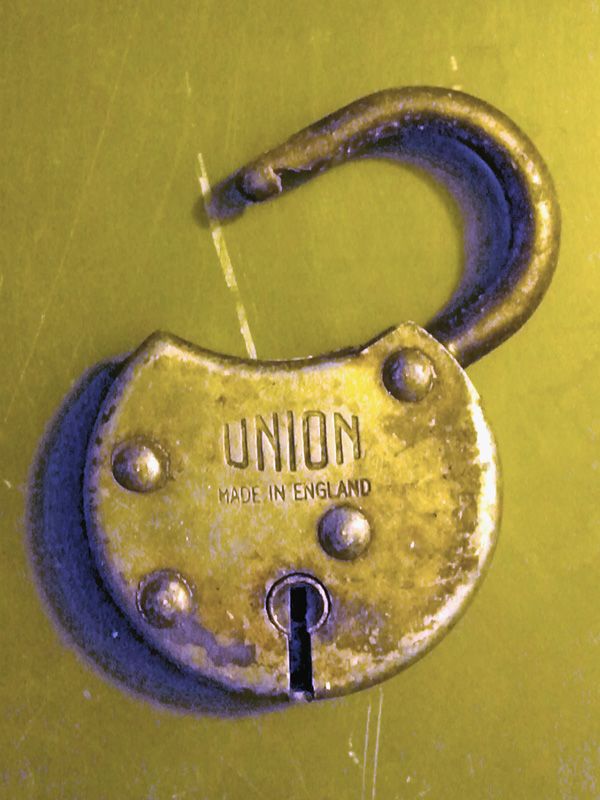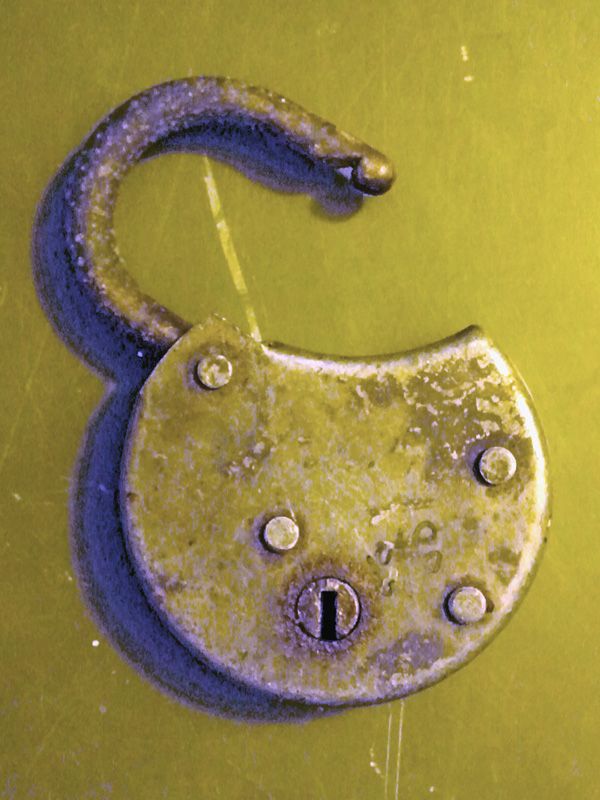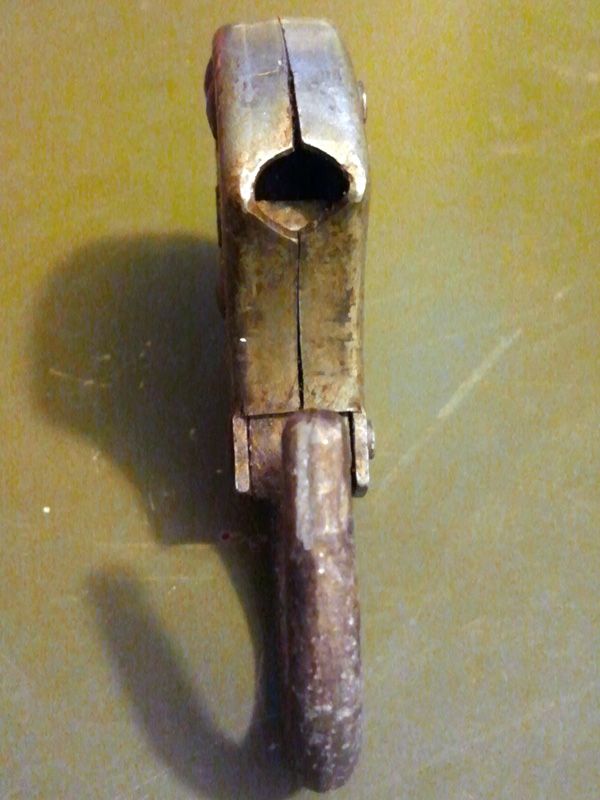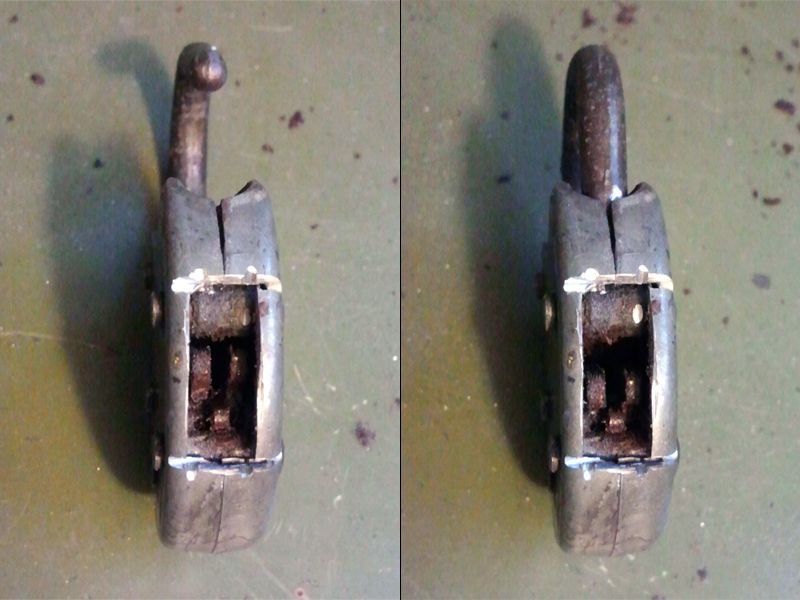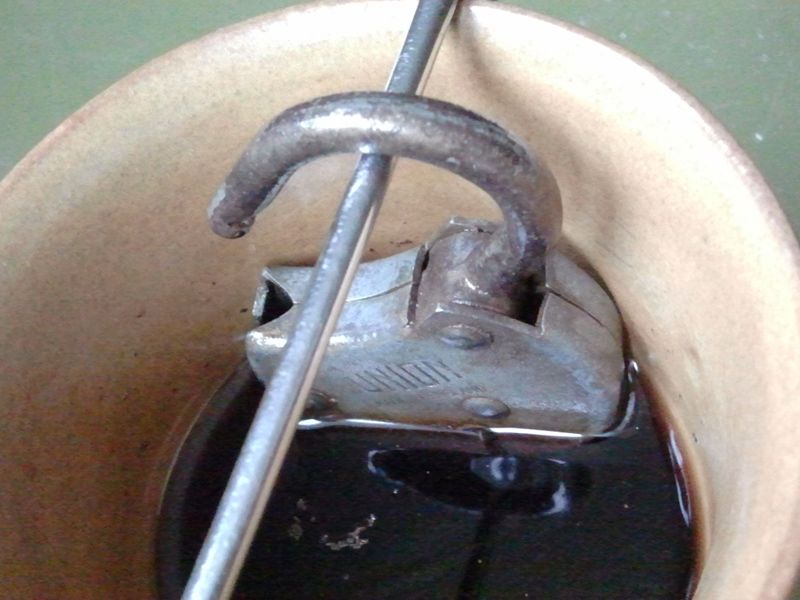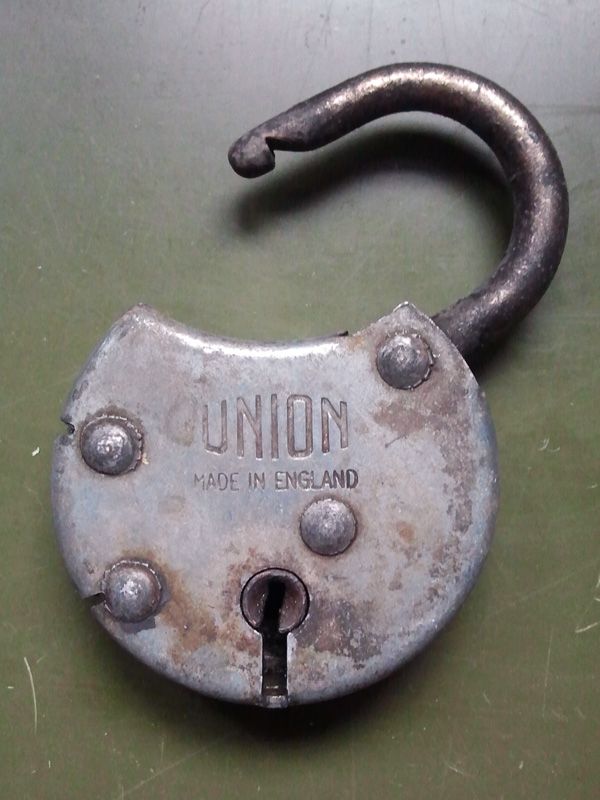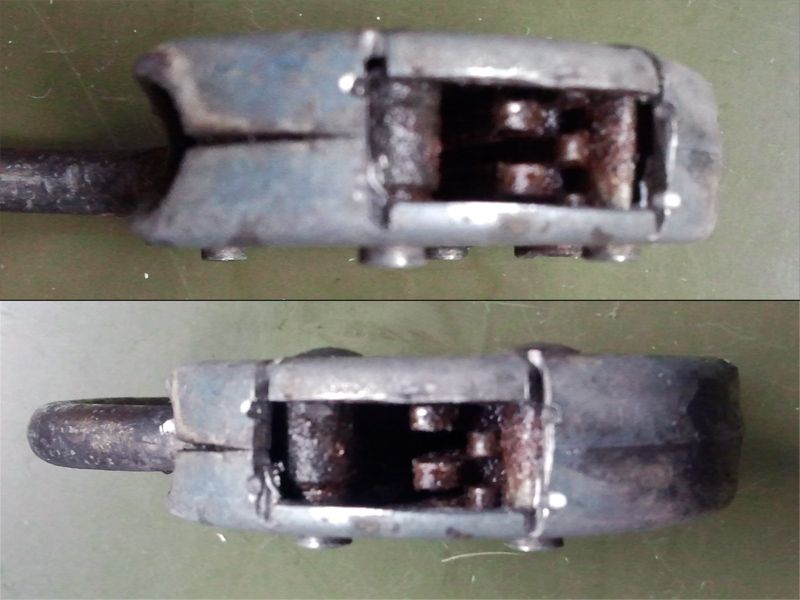Thank you for trying to help me Oldfast, I appreciate it.
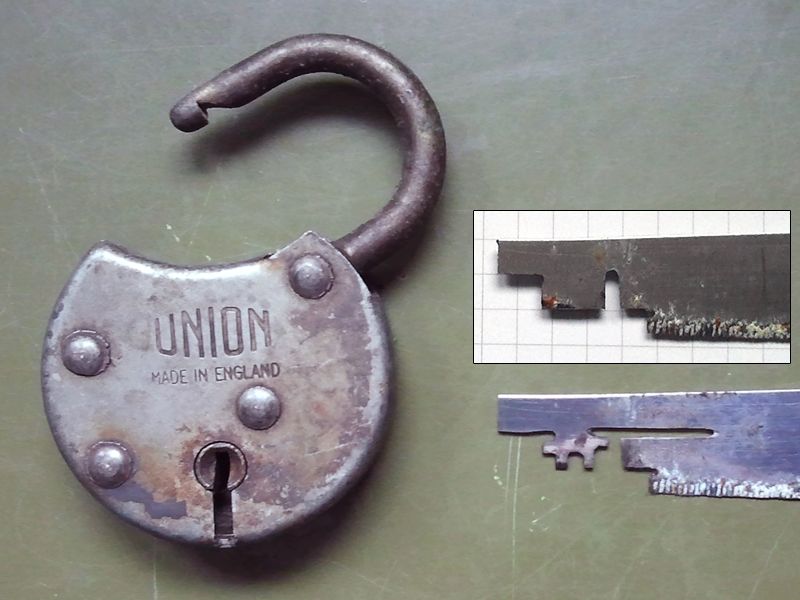
To make a key for this padlock I took some measurements.
Key hole height 11 mm. Key hole width 1.5 mm.
Total padlock thickness 12 mm, wall thickness 1 mm, estimated flag 10 mm.
Then I bent a wire getting an L as tall as the keyhole to probe how much it rotates in the keyhole under each lever. Going from front to bottom I found 5 different "obstacles", and the probe turned respectively 30°, 60°, 30°, 60°, 30°. These are eyeballed angles. These obstacles may be 4 levers and the bolt.
I decided had enough info to start filing an old steak knife. I roughly filed it with a cutoff disk on my dremel and got the shape you see over the paper sheet in the small rectangle. Then I blackened it with a bic lighter, inserted, turned, extracted and filed where I saw a mark. After some time I got what I think is the correct key for this padlock. See it on the green table? Looks like a classic shaped key

I thought I could close the padlock and try if it worked. To my surprise the padlock can't be closed. I got this padlock open and didn't try to close it before making the key because I was afraid I couldn't picked it open again, so I didn't know if it was a working padlock or not. Well, it turns out it's not. The levers may be blocked by rust. The shackle is springy, if I close it it bounces up again, without even catching somewhere inside the padlock. The bolt can be slightly moved with a piece of wire, but pulling it was useless.
I sprayed some unlocking oil in the shackle hole, hoping it'll free the levers. I'll let you know if it works, but I'm afraid it will not be possible to fix this padlock.
Well it was a nice rainy sunday anyway.
Cheers

